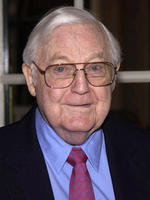
In addition to familiar culprits like Star Wars, one of my favorite films from the age of 5 to 12 was The Day the Earth Stood Still (1951), directed by Robert Wise, who recently died at the age of 81 (obituary here). The Day the Earth Stood Still and Forbidden Planet are easily the best sci-fi films of their era, featuring several memorable scenes while managing to be quite thought-provoking as well. I’m sure growing up in the DC area made The Day the Earth Stood Still stick in my head all the more, as many of the events seemed to be taking place in very familiar locations, such as the Smithsonian Mall... it was if Klaatu and Gort the robot had landed in my backyard.

The Day the Earth Stood Still was based on Harry Bates’ short story “Farewell to the Master,” written in the late 30s or early 40s, and well-known to sci-fans of the era, who remember it mostly for its striking, four-word twist ending. The film only uses the short story as a launching point, however. Gort is large, green, human-featured and speaks in the story, while his towering, mute, visored form and the phrase “Klaatu Barada Nikto!” from the film have become icons of pop culture (probably referenced most notably in Army of Darkness). I believe the score, by Bernard Hermann, was the first to use a theremin (that electronic waver sound), which of course was used in virtually every sci-fi film or TV show afterwards. The scene with Patricia Neal panicking and ineffectively fleeing from Gort was tense for us as kids, but even then we never understood why the hell she didn’t just say the damn words to call him off first thing (or at least a little earlier, as we hollered them at the screen).

I admire Robert Wise for his ability to create classics in several genres. Few directors have ever had his range. In addition to The Day the Earth Stood Still, he directed one of horror’s classics, the first film adaptation of The Haunting (1963). It remains a masterpiece of mood and atmosphere, in which really, very little happens. However, Wise’s artful use of camera angles, shadowy black and white compositions, and a brilliant sound design create a sense of foreboding and menace, most memorably in a scene where some ghost or other entity tries to get into the room where two women are cowering. Wise rarely lost sight of human emotion, regardless of the landscape it occupied. In The Haunting, the audience begins to worry less about the spirits in the house, and more about one of the women, who is so lonely and alienated she drifts towards choosing to join the spirits. Murder is horrible, but watching someone essentially choose suicide can be far more terrifying.

There can be no doubt, however, that most people remember Robert Wise for his two Oscar-winning, landmark musicals, West Side Story(1961) and The Sound of Music(1965). The Sound of Music remains one of the most financially successful films of all time (in adjusted dollars), and the number of parodies of its sweeping opening shot testify again to its iconic stature.

While I’ve never been a huge fan of musicals (most are far too sappy), there’s no denying the energy of the genre and Wise’s skill and artistry. The scene I remember the most from West Side Story is the “little red riding hood rape sequence,” where Anita, donning a red scarf, is accosted by the rival gang and her wounded, raging response sets in motion the final conflict. It’s a brutal, disturbing scene, where in a bow to restraint, a rape does not literally occur, but there can be no doubt about the power dynamic and the emotional impact on Anita. It’s really masterfully done, and an artistic coup over that era's prudish censors. With West Side Story often staged and the film often viewed, and with The Sound of Music sing-a-longs popping up all around the country, it’s safe to say that Robert Wise will be missed but his work not soon forgotten.


No comments:
Post a Comment